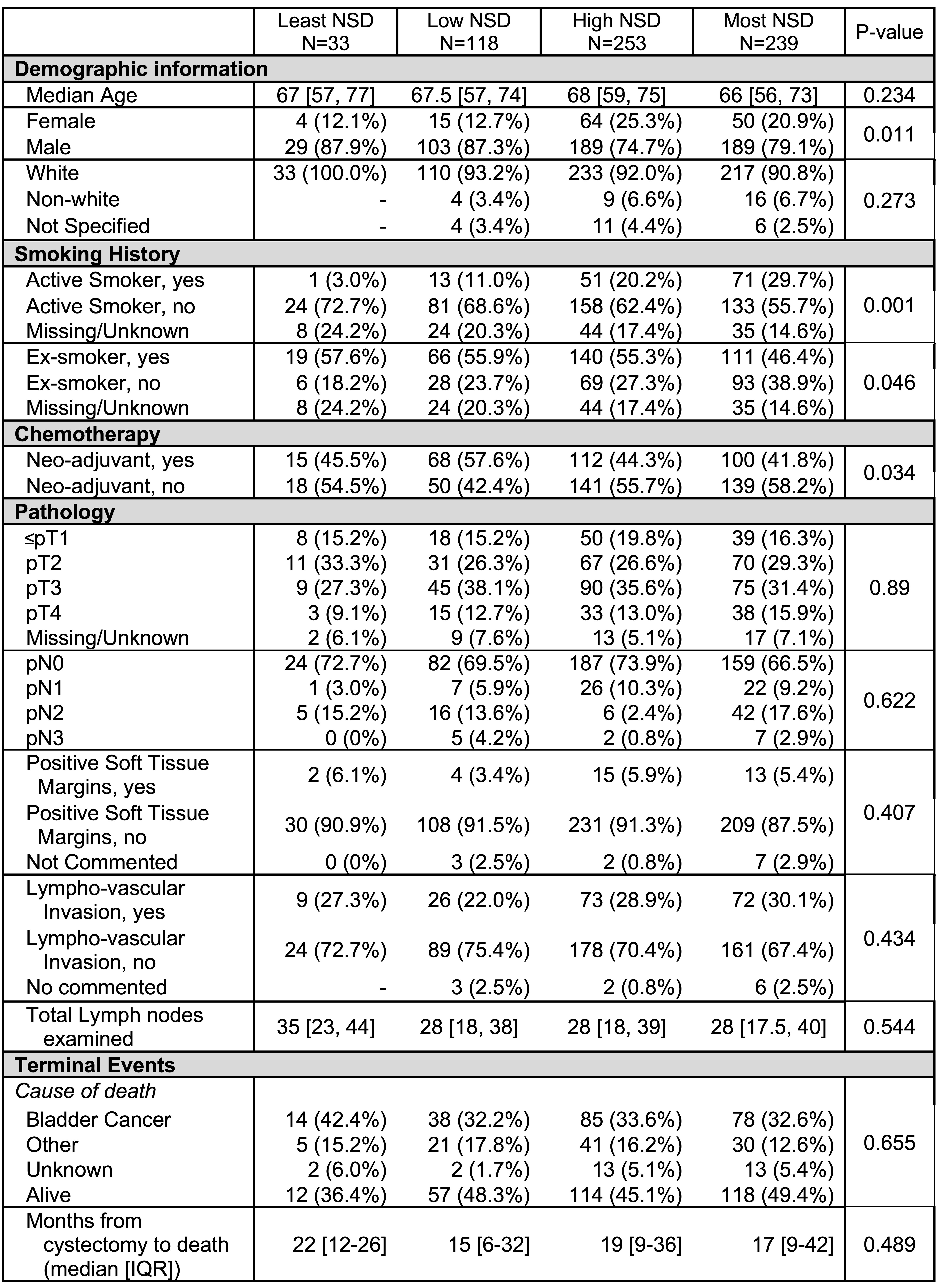Back
Poster, Podium & Video Sessions
Best Poster Award
MP42: Bladder Cancer: Epidemiology & Evaluation II
MP42-09: Neighborhood Disadvantage Correlates with Outcomes in Muscle Invasive Bladder Cancer
Sunday, May 15, 2022
10:30 AM – 11:45 AM
Location: Room 225
Devon Langston*, Sarah Beebe, Tasha Posid, Victor Heh, Kamal Pohar, Columbus, OH

Devon M. Langston, BA
The Ohio State University
Poster Presenter(s)
Introduction: Area deprivation index (ADI), a measure of neighborhood socioeconomic disadvantage (NSD), has never been studied in bladder cancer. ADI is an integrated metric of neighborhood-level material disadvantage, which incorporates factors including income, employment, education, and housing quality of a local area as derived from US census data. We evaluated the association between NSD, demographics, and outcomes for Ohioans diagnosed with muscle invasive bladder cancer (MIBC) treated by radical cystectomy (RC) at a tertiary medical center.
Methods: 643 consecutive MIBC patients were identified and entered in a RC database (2012-2018). Patient clinical, pathological, and surgical characteristics were compared across ADI quartiles (least, low, high, or most NSD) using Chi2 tests (categorical) and ANOVA (continuous).
Results: Relative to all other groups, patients in the high and most NSD quartiles tend to be female (23.2%, P= 0.011 in four-quartile comparison). The most NSD quartile tends to be non-white (6.7%, P=0.273), and current smokers (29.7%, P=0.001), whereas patients in the least NSD quartile are more likely to be ex-smokers (57.6%, P=0.046). Patients in the most NSD quartile are less likely to complete neo-adjuvant chemotherapy prior to RC (58.2%, P=0.034). Patients in the most NSD quartile have a higher rate of nodal metastatic disease (N+) (2.9%, P=0.622), and lympovascular invasion (LVI) (30.1%, P=0.434), pathological T-stage 15.9% pT4, P=0.89). Patients in the most NSD quartile have a soft-tissue positive margin rate of 5.44% (P=0.407). Additionally, patients in the most NSD quartile tend to have a shorter time from cystectomy to death (median 17 months [IQR 9-42], P=0.489).
Conclusions: Although the size of our dataset fails to achieve statistical significance for many comparisons, a series of consistent trends are noted. MIBC patients in the most NSD quartile who are treated by cystectomy receive NAC less often, have higher rates of N+ and LVI, which may be associated with worse overall survival. Commissioning a larger multi-institutional dataset would allow greater statistical power.
Source of Funding: None

Methods: 643 consecutive MIBC patients were identified and entered in a RC database (2012-2018). Patient clinical, pathological, and surgical characteristics were compared across ADI quartiles (least, low, high, or most NSD) using Chi2 tests (categorical) and ANOVA (continuous).
Results: Relative to all other groups, patients in the high and most NSD quartiles tend to be female (23.2%, P= 0.011 in four-quartile comparison). The most NSD quartile tends to be non-white (6.7%, P=0.273), and current smokers (29.7%, P=0.001), whereas patients in the least NSD quartile are more likely to be ex-smokers (57.6%, P=0.046). Patients in the most NSD quartile are less likely to complete neo-adjuvant chemotherapy prior to RC (58.2%, P=0.034). Patients in the most NSD quartile have a higher rate of nodal metastatic disease (N+) (2.9%, P=0.622), and lympovascular invasion (LVI) (30.1%, P=0.434), pathological T-stage 15.9% pT4, P=0.89). Patients in the most NSD quartile have a soft-tissue positive margin rate of 5.44% (P=0.407). Additionally, patients in the most NSD quartile tend to have a shorter time from cystectomy to death (median 17 months [IQR 9-42], P=0.489).
Conclusions: Although the size of our dataset fails to achieve statistical significance for many comparisons, a series of consistent trends are noted. MIBC patients in the most NSD quartile who are treated by cystectomy receive NAC less often, have higher rates of N+ and LVI, which may be associated with worse overall survival. Commissioning a larger multi-institutional dataset would allow greater statistical power.
Source of Funding: None


.jpg)
.jpg)